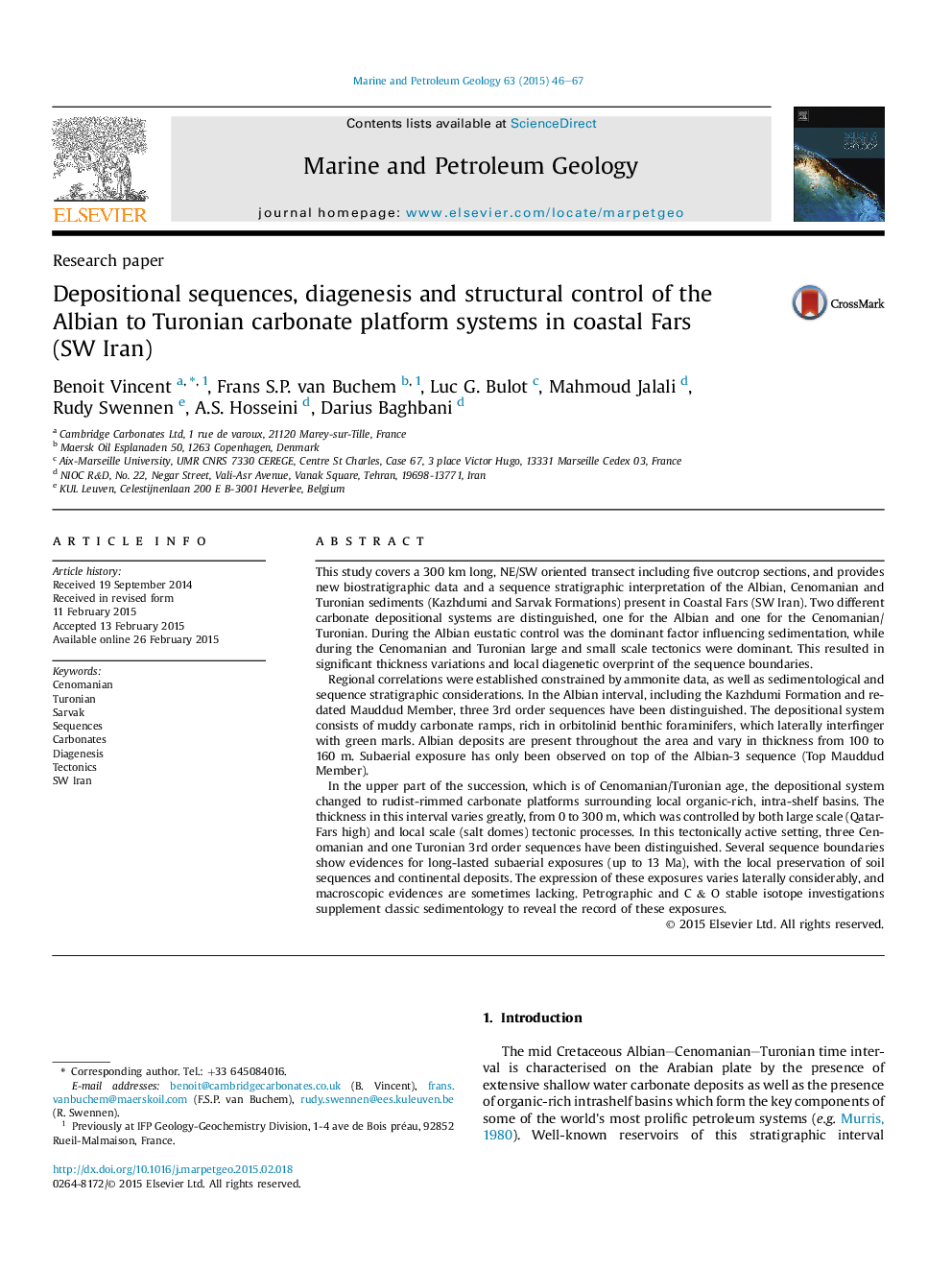| Article ID | Journal | Published Year | Pages | File Type |
|---|---|---|---|---|
| 6435198 | Marine and Petroleum Geology | 2015 | 22 Pages |
â¢New dating of the Mauddud Member places it in the latest Albian.â¢The Albian period is characterized by tectonic quiescence.â¢The Cenomanian/Turonian was a tectonically active period.â¢Late Cenomanian-Turonian SBs are characterized by long-lasted subaerial exposures.
This study covers a 300Â km long, NE/SW oriented transect including five outcrop sections, and provides new biostratigraphic data and a sequence stratigraphic interpretation of the Albian, Cenomanian and Turonian sediments (Kazhdumi and Sarvak Formations) present in Coastal Fars (SW Iran). Two different carbonate depositional systems are distinguished, one for the Albian and one for the Cenomanian/Turonian. During the Albian eustatic control was the dominant factor influencing sedimentation, while during the Cenomanian and Turonian large and small scale tectonics were dominant. This resulted in significant thickness variations and local diagenetic overprint of the sequence boundaries.Regional correlations were established constrained by ammonite data, as well as sedimentological and sequence stratigraphic considerations. In the Albian interval, including the Kazhdumi Formation and re-dated Mauddud Member, three 3rd order sequences have been distinguished. The depositional system consists of muddy carbonate ramps, rich in orbitolinid benthic foraminifers, which laterally interfinger with green marls. Albian deposits are present throughout the area and vary in thickness from 100 to 160Â m. Subaerial exposure has only been observed on top of the Albian-3 sequence (Top Mauddud Member).In the upper part of the succession, which is of Cenomanian/Turonian age, the depositional system changed to rudist-rimmed carbonate platforms surrounding local organic-rich, intra-shelf basins. The thickness in this interval varies greatly, from 0 to 300Â m, which was controlled by both large scale (Qatar-Fars high) and local scale (salt domes) tectonic processes. In this tectonically active setting, three Cenomanian and one Turonian 3rd order sequences have been distinguished. Several sequence boundaries show evidences for long-lasted subaerial exposures (up to 13Â Ma), with the local preservation of soil sequences and continental deposits. The expression of these exposures varies laterally considerably, and macroscopic evidences are sometimes lacking. Petrographic and C & O stable isotope investigations supplement classic sedimentology to reveal the record of these exposures.
